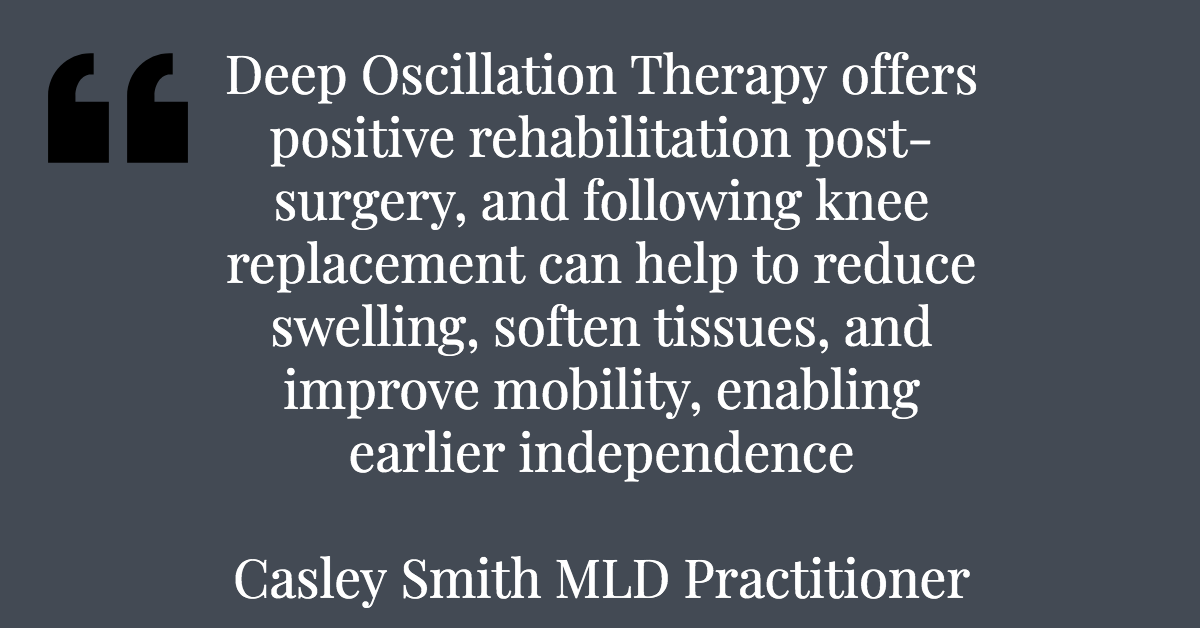USE OF DEEP OSCILLATION THERAPY FOLLOWING TOTAL KNEE REPLACEMENT
Following a total knee replacement, it was decided to use Deep Oscillation Therapy (DOT) to try to reduce the swelling around the knee joint. This we did from the 5th day following surgery, carrying out the treatment daily for 2 weeks, then on alternate days for a further 2 weeks.

As well as aiming to relieve the swelling around the knee joint we hoped that the tissues, which at that point were doughy in texture, would become softer, and mobility would improve. The treatment was given in conjunction with Manual Lymph Drainage (MLD), using the Casley Smith method.
Since the knee replacement surgery, the tissues around the new knee joint had become firm and “doughy”, and although these were also tender this did not prevent DOT from being carried out and well-tolerated.
Full MLD clearance of the trunk was carried out first, as guided by the Casley Smith principles of using functioning lymph drainage routes by clearing these first before moving excess fluid away from the thigh, knee and lower leg. A 50-minute treatment session was undertaken with the first 25 minutes spent on truncal clearance and the remaining 25 minutes clearing the oedematous tissues in the leg using the DOT machine. As the treatment was well tolerated extra time was spent working on the firmer tissues around the knee.
After the 2 weeks of using Deep Oscillation the tissues had begun to soften, being more “mobile”, and no longer feeling firm and “doughy”. The swelling had also begun to reduce, not only around the knee joint, but the thigh, lower leg, ankle and foot were also less oedematous. The decision was therefore taken at this point to reduce the treatment sessions to alternate days, with self-care management via the paddles maintained in between treatments. This pattern continued for another 2 weeks, after which time the swelling was well reduced, with tissues were no longer firm, but soft and mobile. Due to the reduction in the swelling the other positive outcomes were that the knee joint felt more supple, and movement of the joint was easier. Mobility began to improve more quickly than had been expected, with walking also easier.
Deep Oscillation Therapy offers positive rehabilitation post-surgery, and following knee replacement can help to reduce swelling, soften tissues, and improve mobility, enabling earlier independence.
Casley Smith MLD Practitioner
Subscribe to the New Monthly Newsletter starting 1st August 2020

